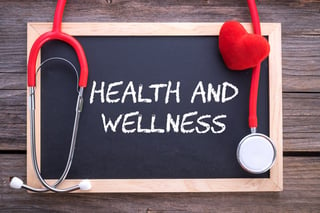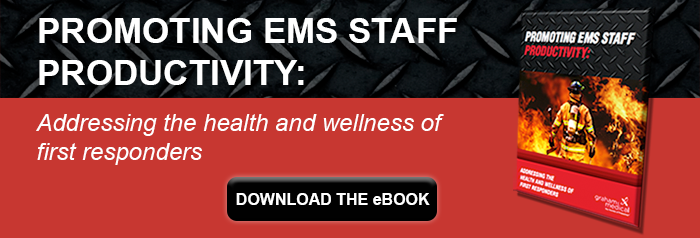 Emergency responders are tasked with protecting the health and safety of the public. From the stabilization of the spine after a car accident, to providing supplemental oxygen after a house fire, to treating a slip and fall injury of the elderly, our first responders understand that health matters.
Emergency responders are tasked with protecting the health and safety of the public. From the stabilization of the spine after a car accident, to providing supplemental oxygen after a house fire, to treating a slip and fall injury of the elderly, our first responders understand that health matters.
So why is EMS health and safety so often overlooked? EMS practitioners are at risk for numerous ailments based on career-related risks. While not all problems can be prevented, quick diagnosis from administrative and medical staff can help ensure early treatment and intervention to solve problems before they progress.
Physical Injury
Over 21,000 EMS injuries were reported in 2014. Of these injuries, most could be attributed to three main causes:
- Clutter and Trash
- Dated Architecture
- Lifting Injuries
EMS workers often are called to home situations where the patient can no longer keep up with daily chores and cleaning. In some homes, things may be closer to a hoarding situation. The clutter and debris can cause slip and fall injuries that result in multiple missed work days. Dated architecture has a similar result, as the challenges of transporting a patient through tiny doorways, tight hallways, and steep stairs pose its own risks.
If that wasn't enough, lifting injuries such as back strain are also common. When not provided with adequate training and patient transport equipment, these risks can increase. Back pain is a very common complaint of nursing and EMS providers.
Illness
On the job exposure to pathogens can lead to a serious EMS health and safety concern. Chemicals and particulates in smoke from accidents or fires can cause severe damage to the body, especially the respiratory system. Respiratory disease has such a strong correlation with firefighting, that 41 states and 7 provinces currently have presumptive laws to afford workers additional protection. Heart disease and cancer are also common ailments for EMS providers.
Bloodborne pathogens also pose a serious risk of the transmission of HIV, as well as Hepatitis B and C to emergency responders.
Mental Health
Mental health issues pose serious risks for EMS health and safety as well. The majority of EMS providers suffer from sleep deprivation and stress at some point in their career. This strain can lead to more serious conditions including PTSD and depression if not dealt with properly. Surveys reveal that 37% of EMS providers have experienced suicidal thoughts, a staggering 33.3% higher than the national average. Often avoided in discussion in order to appear strong on the job, or fearful that it may affect promotion or trustworthiness, mental health is a serious component of the health and well-being of EMS personnel.
So what can you do to protect your EMS crew? Education is key to understanding and preventing health issues as quickly as possible. For a more in-depth discussion of these issues, download our eBook, Promoting EMS Staff Productivity: Addressing the Health and Wellness of First Responders.

